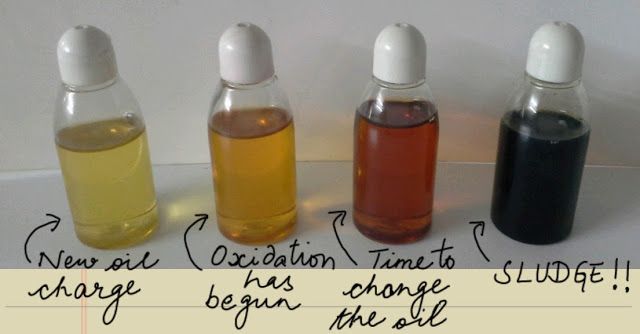3 Ways Singapore's Seasonal Haze Affects Your Car
Ignoring the effect of air pollution on your car might end up costing you more car-related money in the long run. Here's how.

Entire forests in newsprint have been sacrificed to discuss the effect of the ongoing haze season on our bodies. Yet hardly any trees have been felled to talk about the effect of the haze on our cars. The reason is obvious: compared to the haze, petrol and diesel engines output far more pollution than the seasonal fires in Indonesia.

Even so, I’m going to do the unthinkable – try to find out how the seasonal haze makes vehicle pollution – itself the 2nd highest source of greenhouse gas emission – even more environmentally-harmful. Yes, air pollution can lead to even more air pollution – what a novel idea that’s never been discussed before!
Actually, ignoring the effect of air pollution on your car might end up costing you more car-related money in the long run. Here’s how.
The haze is primarily composed of particulate matter and gasses – and when it comes to paintwork, in particular we are concerned about sulphur dioxide, nitrogen dioxide, carbon dioxide and monoxide, and ozone.
These compounds are acidic in nature, and when released into the air, they mix with water, oxygen and other chemicals to form even more acidic compounds. The result? Acid rain.

No less than the American EPA (Environment Protection Agency) reports that damage to car paintwork from acid rain has been on the rise over the last 2 decades.
These typically occur on horizontal surfaces and appear as irregularly shaped, permanently etched areas. The damage can best be detected under fluorescent lamps, can be most easily observed on dark colored vehicles, and appears to occur after evaporation of a moisture droplet. In addition, some evidence suggests damage occurs most frequently on freshly painted vehicles. Usually the damage is permanent; once it has occurred, the only solution is to repaint.

So how can you protect your new car from such damage? The EPA says “frequent washing followed by hand drying, covering the vehicle during precipitation events (rain), and use of protective coatings currently on the market can help.”
In a nutshell, keep your car indoors, wash it frequently, hand dry wet paintwork immediately after rain, and apply wax and paint protection.
Much has been said about how acid rain is bad for the environment. How about your car's interior? For starters, a car’s rubber seals are intended to keep water out, not air. As they get rained on by acid rain, the seals slowly harden and their sealing ability deteriorates - they would do that over time anyway, but the acidity accelerates the process.
By then, unlike your home, simply closing the windows and doors won’t make your car airtight. And once your vehicle is on the roads, the air that’s inside is continually refreshed by the air conditioning filter, which gets clogged up over time with dust, dander, hair and of course, PM 10 and PM 2.5.

If you feel your car’s blowers getting weaker over time, get the air conditioning filter replaced – it’s probably past its effective use-by date and functionally useless anyway. Even HEPA-rated filters used by ionized aircon systems like those found in Nissan cars will clog up over time.
Lastly, don’t drive with the air ventilator set to open. That’ll let in even more pollutants via the engine bay, which is not what you want.
Apart from the exterior and the interior of your car, there’s also the engine efficiency to worry about. Engine air filters get less efficient over time as they trap more and more dust and dirt. You can expect an even shorter life cycle for your engine’s air filter during a prolonged haze like what we are experiencing now.
If, in the event that your air filter is new and fresh, there’s the likelihood that you are now letting in more particulates that the filter was not designed to catch in the first place. These too-small particles, of which there are plenty more now, will end up inside the engine, where they are combusted together with air and petrol to form novel new molecules.

The air mix is less than optimal as well, with the aforementioned sulphur, nitrogen and carbon oxides for the engine’s ECU to have to deal with.
The result is a more complicated suck, squeeze, bang, and blow cycle. There is an increase of more undesirable byproducts from combustion of petrol and oxygen, the accumulation of ever more grime in your engine oil, and an overworked catalytic convertor.
You will hence contaminate the airflow or oxygen sensor over time, and clog up your catalytic convertor, both of which changes the ECU maps to run richer fuel-air mixtures, which increases your petrol consumption. You’ll step harder to find more power, but won’t get the shove you want from your foot.

Meanwhile, because of all the corrosive fumes spewing from your engine, the metal in your exhaust pipe will get eroded thinner and thinner until one day a noticeable hole forms, which will have to be welded shut. So who says cars are immune to the effects of pollution?
Well, what can you do about the above? You can:
Send your car for servicing, which should include motor oil and air filter changes.
Drive with a lighter foot to decrease the intake of bad air and petrol combustion
Switch to a hybrid or electric car.
Pollution begets more pollution, so I’m going to take option C when I can afford to, being an environmentally-concious sort of person. But that’s only if COE prices themselves can stop bringing tears to my eyes, or stop inducing gasps and gagging every time I consider buying a new car!
Credits:


Get the Best Price for your used car
from 500+ dealers in 24 hours

- Convenient and Hassle-Free
- Consumer Protection
Transparent Process
With No Obligation








